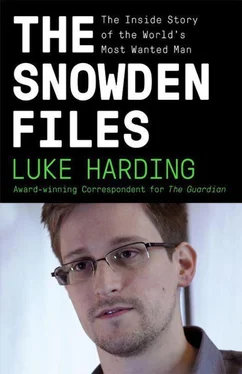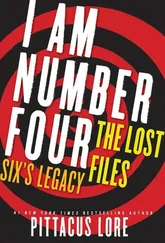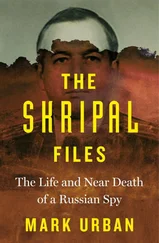It would have to be a personal meeting. In late March she returned to the States. From here she sent Greenwald a message, suggesting that they meet face to face, without any electronics.
Greenwald was already due to fly to New York to give a talk to the Council on American Islamic Relations (CAIR), the Muslim civil rights organisation. The pair met in the lobby of Greenwald’s hotel, the Marriott in Yonkers – an unlikely, ‘horrible’ venue for what was to be the first step of the most significant leak in US intelligence history.
Poitras showed Greenwald two emails. She didn’t know the unknown source had already tried to reach Greenwald himself. Was he real? Or an imposter, trying to entrap her? Poitras was excited, nervous and seeking verification. ‘There were no details in the emails. The source didn’t identify himself. He didn’t say where he worked,’ Greenwald says.
Instead of facts, the emails offered up a radical personal manifesto – an intellectual blueprint for why Snowden was prepared to leak classified material, and what the life-changing consequences of this action would inevitably be. ‘It was philosophically what he wanted to achieve and why he was willing to take these risks,’ Greenwald says. The source seemed credible: ‘Somehow Laura and I instinctively felt there was so much authentic passion about it. We both realised the emails were real. [The tone] was smart and sophisticated, not rambling or crazy.’
A picture was forming – of an intelligent, politically savvy, rational individual, of someone who had been working on a plan for some time. The source was unfolding it, stage by stage. The journalists had to wait for each new episode. ‘He was talking as though he was taking a huge risk, about disclosures that were very serious,’ Greenwald says. ‘He didn’t seem frivolous or delusional.’
Chatting to Poitras, Greenwald sketched out a way forward of his own. For the story to have impact, people needed to care, Greenwald argued. They would only care if the source could demonstrate convincing evidence of illegality – of wrong behaviour by the NSA, which went way beyond any democratic mandate. The best way of doing this would be to get hold of the national security documents: without them it would be difficult to rattle the doors on these issues.
The source behaved in an unexpected way. Poitras had assumed that he would seek to remain anonymous. After all, coming forward would bring the law down on his head. But Snowden told her: ‘I’m not cleaning the metadata. I hope you will paint a target on my back and tell the world I did this on my own.’
In another email Snowden said that the ‘hard part’ of pulling the documents was over, but that a different dangerous phase was beginning. ‘I could sense the stakes,’ says Poitras. ‘He was very worried about his friends and family being implicated. He didn’t want to remain anonymous. He didn’t want other people to take the fall.’
Snowden, it seemed, knew his actions were likely to end with him going to jail. He warned: ‘You need to manage your expectations. At a certain point I’m not going to be reachable.’
Once a relationship of trust had been established, Poitras told the source she would like to interview him. She told Snowden he needed to articulate ‘why’ he was taking these risks. This was important.
It hadn’t occurred to Snowden to give an interview. But the idea was a good one: his goal was to get the documents out to the world. He had had a view to leaking this material for four years, he said. At one stage he had considered giving the material to Assange. Eventually he rejected the idea. WikiLeaks’ submission site was down and Assange was under surveillance, stuck in a foreign embassy. Even with Assange’s security skills, Snowden realised it would be difficult to punch through to him.
By late spring 2013, the idea of a conclusive meeting was in the air.
‘I need six to eight weeks to get ready to do this,’ Snowden wrote.
What exactly the ‘this’ meant was still tantalisingly unclear. Poitras returned to Berlin. Greenwald returned to Rio. He got on with his life. The shadowy source was interesting. But – as is so often the case with journalistic leads – the ‘this’ could have been less alluring than it seemed; one of journalism’s many false starts. ‘I didn’t sit around fantasising about it. He could be fake,’ Greenwald says. As the weeks went by it seemed less rather than more likely that something would happen. ‘I gave it almost no thought. I really wasn’t focused on it at all.’
In mid-April, Greenwald received an email from Poitras. It told him to expect a FedEx delivery. Neither of the two parties had communicated much in the interim; Greenwald still hadn’t got encryption. But the FedEx parcel signalled that things were moving and that, as Greenwald puts it, ‘the eagle had landed’.
The package arrived; inside it were two thumb drives. Greenwald at first imagined that the USB sticks contained top-secret documents ‘wrapped in layers of encryption and Linux programs’. In fact, they contained a security kit, allowing Greenwald to install a basic encrypted chat program.
Snowden contacted Poitras again: ‘You should come. I will meet with you. But it’s risky.’
It was the next stage of their plan. Snowden intended to leak one actual document. The file would reveal collaboration between the NSA and giant internet corporations under a secret program called PRISM. ‘Heart attacks will be had over this,’ Snowden claimed.
Snowden didn’t want Poitras directly involved; instead he asked her to recommend other journalists who might publish it without attribution to him. He wanted to spread his net wider.
Poitras flew across to NYC again for what she imagined would be her meeting with a senior intelligence bureaucrat. She assumed this would naturally take place somewhere on the US east coast – probably in Baltimore, or a country house in Maryland. She asked for a minimum of half a day to film, and ideally a whole day. The source then sent her an encrypted file. In it was the PRISM PowerPoint. And a second document. It came as a total surprise: ‘Your destination is Hong Kong.’
The next day a further message arrived for Poitras, in which the source for the first time gave his name: ‘Edward Snowden’.
The name meant nothing; Poitras knew that if she searched Snowden’s name on Google this would immediately alert the NSA. Attached was a map, a set of protocols for how they would meet, and a message: ‘This is who I am. This is what they will say about me. This is the information I have.’
Snowden now contacted Greenwald himself, using his new encrypted channel. ‘I have been working with a friend of yours… We need to talk, urgently.’
The whistleblower finally had something he had been craving for nearly six months – a direct, secure connection to the elusive writer. The source was evidently familiar with Greenwald’s work. The two messaged. Snowden wrote: ‘Can you come to Hong Kong?’
The demand struck Greenwald as bizarre and it left him ‘really confused’: what would someone who worked for a US security agency be doing in a former British colony, part of communist China and far away from Fort Meade? ‘I didn’t understand what Hong Kong had to do with this,’ Greenwald says. His instinct was to do nothing. He was working on things that appeared important at the time; a book deadline loomed. ‘I kind of stalled a little bit,’ he says.
Snowden tried again via Poitras, urging her to get Greenwald to fly to Hong Kong ‘right now’.
Sitting alone in his Chinese hotel room, expecting exposure at any moment, Snowden was growing frantic. His plan to escape with a cache of top-secret NSA and GCHQ material had worked thus far with remarkable ease. That was supposed to be the hard part. But the easy bit – passing the material to sympathetic journalists – was proving tricky.
Читать дальше












